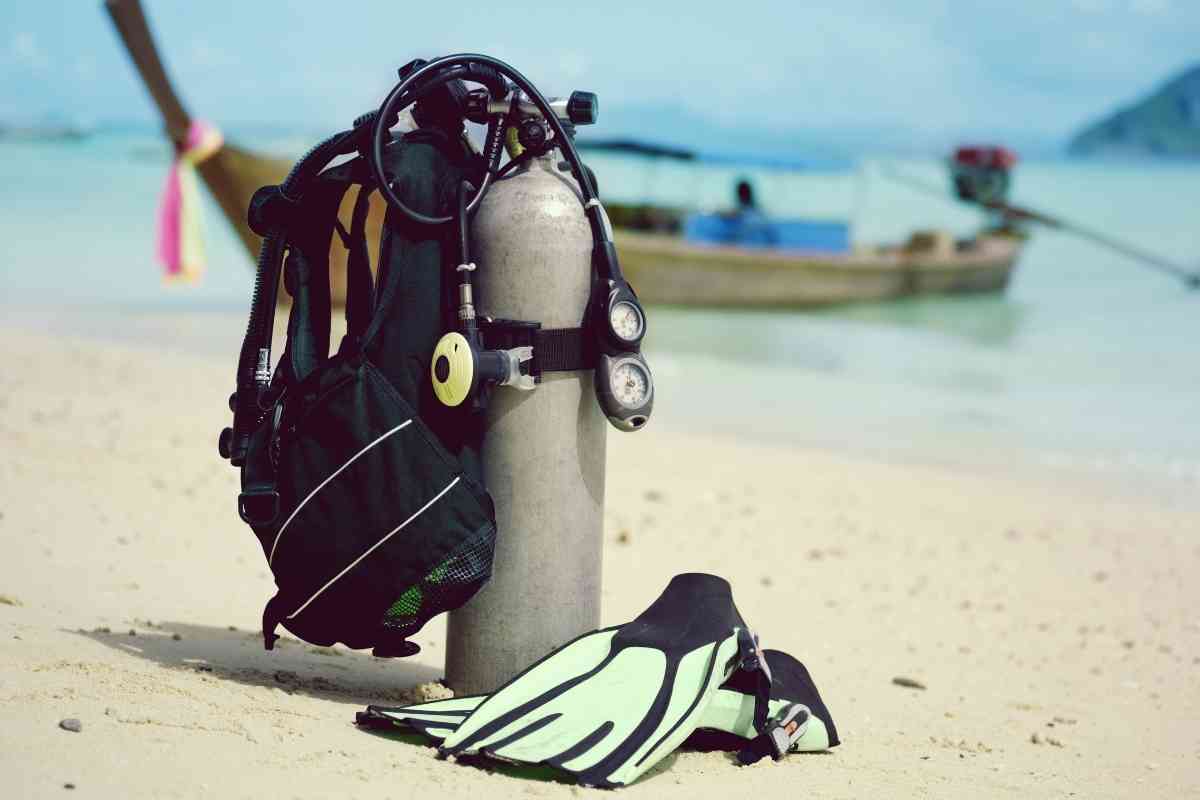Scuba diving is one of the most popular water sports in the USA. The deep-diving experience lets you explore underwater without any restrictions. Plus, it takes away gravity and allows you to enjoy weightlessness in the cool sea.
If you’re planning to try out scuba diving, one question you’ll likely wonder is how long will a scuba tank last?
The scuba tank refers to a metal cylinder that contains high-pressure gas. The tank provides the diver with oxygen to breathe and survive underwater. But not all scuba tanks have the same lifespan.
Some tanks will last longer than others, and this all depends on factors we will discuss below. Continue reading to learn more about factors that affect the scuba tank’s air supply. Let’s dive in!

3 Factors that Affect the Scuba Tank’s Air Supply
As mentioned, a scuba tank contains a high-pressure air supply. The tank will become useless once the air inside finishes. Thus, here’s what affects the air supply:
Scuba Tank Volume
If you think there is one standard tank for scuba diving, you are mistaken. The market is full of different scuba diving tank types.
You will come across small, medium, and large-sized options. Each tank will be comprised of a different material, like aluminum and steel. But our concern is only with the size because the material does not affect the air supply of the tank.
A scuba tank size does not refer to the literal size. Instead, it refers to the internal volume measured in cubic feet.
Hence, when we say a large-sized tank, it means a greater internal volume. It can carry more air supply. So, people who want to dive deeper and longer should always opt for the larger tank.
Most scuba divers would choose an 80 cubic feet tank for recreational diving. The tank size increases to 100 cubic feet for professionals. Both tanks will last about an hour in a 40-foot dive.
Unfortunately, large tanks might be uncomfortable for petite divers. Opting for a smaller tank will affect the depth and length you will be able to dive.
Depth of the Water
There’s one rule of the sea that all scuba divers should know. The pressure will increase as you go deeper into the water, but this increase won’t affect the air supply in the tank.
This is because the air inside is high-pressure and compressed. Also, the robust steel and aluminum tanks are capable of withstanding the force. So, how does this factor affect the air supply?
It affects the air coming out of the tank and flowing into your body through the hose. The high water pressure in the deep sea compresses the air further. This causes you to start consuming the air supply at a faster rate.
For example, the amount of air that occupies 1 cubic foot at the surface level will occupy ½ cubic foot at 33 feet. So a scuba tank will not last long at larger water depths.
Air Consumption Rate
The air consumption rate is quite a self-explanatory term. It refers to the rate at which a scuba diver consumes the air. Every diver is different, so the air consumption rate will vary from person to person.
Generally, a tall or healthy diver will have a larger lung volume. Typically, they will consume more air than one with a small lung volume. Short height and petite individuals have small lung volumes.
The air consumption rate depends on a lot of factors. These include stress, buoyancy control, experience level, physical exertion, and much more. You can try to reduce it by slow and relaxed breathing.
How Long Does a Scuba Tank Last? The Simple Answer.
Many factors contribute to a scuba tank’s longevity, but we can tell you the exact based on an average diver. Keep reading to learn the average calculation.
An average diver who uses an average tank of 80 cubic feet at an average depth of 40 feet can stay underwater for up to 45 minutes. It may extend up to 60 minutes before you can surface to the top with a safe reserve of air.
What Else Affects Your Dive Time?
Staying underwater is not only about how much air supply is remaining in the scuba tank. At times, you would want to cut down your dive time despite having an air supply. These conditions include:
No-Decompression Limit
The no-decompression limit (NDL) is the maximum allowed dive time at a specific depth. When talking about the no-decompression limit, this is assuming the scuba diver will ascend directly to the surface without needing to stop. The no-decompression limit becomes shorter with any increases in time and depth.
This limit becomes shorter as the diver is absorbing nitrogen at a faster rate. Once exceeded, a diver will have to make stops while ascending. He may also have to stay out of the water for a specific time before diving in again.
Someone Else Runs Out of Air Supply
The majority of scuba divers explore underwater in a group or teams of 2-4 people. Sometimes, your dive buddy may reach the air supply limit before you. You will need to help them get to the surface safely to avoid an emergency.
Conclusion
Summing it up, there’s no definite answer to how long a scuba tank lasts. It all depends on the tank volume, depth of water, and air consumption rate. Sometimes, factors like no-decompression limit and emergencies can also affect the tank lifespan.
You should calculate the exact time your scuba tank will last before diving. For an estimate, you can stay underwater for 45 to 60 minutes when using an 80 cubic foot tank at a 40-foot depth.
